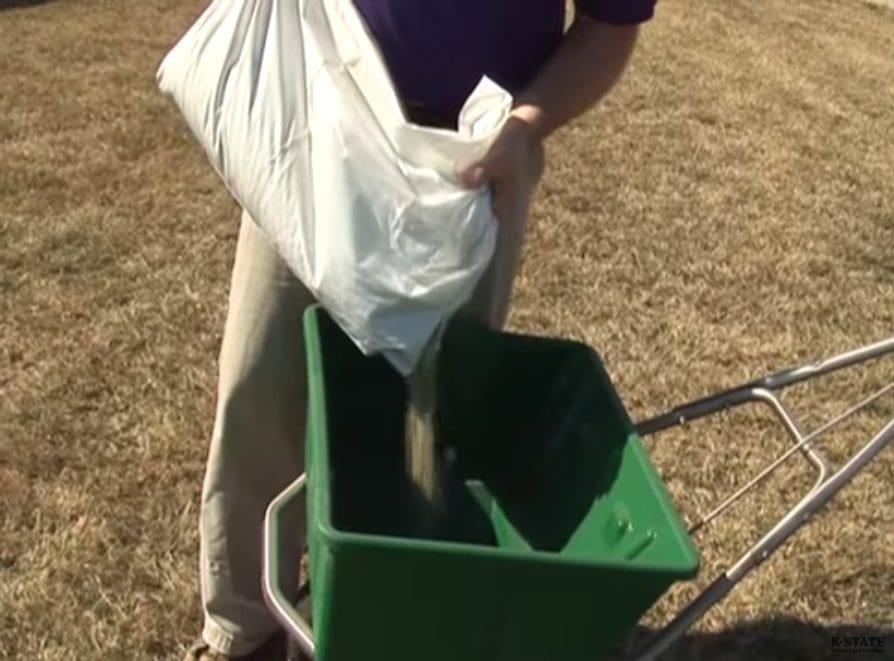By Pat Melgares, K-State Research and Extension news service
Manhattan, KS– Kansas homeowners have many options when it comes to planting a lawn. The state is known for such cool-season grasses as tall fescue and bluegrass, and warm-season favorites zoysia and bermuda.
“But,” says Dennis Patton, a horticulture agent with K-State Research and Extension’s office in Johnson County, “they all struggle at some point in time.”
Kansas’ cool-season varieties generally need a boost in September after enduring a summer of high temperatures, which in recent years has been accompanied by below-normal rainfall in much of the state.
September, Patton said, is the best time to overseed a lawn that has become thin during the summer months.
“It starts with buying quality seed,” he said. “The label on the grass seed bag tells you exactly what’s in there; it’s required by law. That’s your starting point to make sure you’re getting quality seed.”
For cool-season grasses, Patton said the bag’s label should indicate that the mix is as close as possible to 100% bluegrass or 100% tall fescue. “You could have two or three varieties of bluegrass or tall fescue in there; that’s fine. But it’s the word ‘other’ that you want to be careful about.”
Labels that mix seed into traditional grasses may be indicated by the words “Other Seed” or “Other Crop,” said Patton, who was blunt on what that may ultimately mean for the homeowner’s lawn: “It’s like buying junk, or potentially weed seed,” he said.
“A lot of these that I call inferior grasses don’t have the texture, color or form that we really need,” Patton said. “So you end up with this really clumpy appearance, especially with orchardgrass, which is one of the main contaminants in tall fescue seed.”
Even mixes that include as little as .5% to 1% of other seed can create problems, Patton said. As an example, a mix of .5% of orchardgrass equals about 12-16 seeds per square feet, according to Patton.
“It can certainly add up quickly,” he said. “So what you’re looking for is a seed that gets that ‘Other Crop’ down to .01%.”
In addition to buying quality seed, Patton said the key to successfully overseeding a lawn is prepping the soil through such practices as verticutting or core aerating; then “watering lightly and often” once seed is down.
“When you overseed the lawn, you throw all of the lawn watering rules out of the book,” Patton said. “Usually when we talk about watering the lawn, we talk about deep and frequent. But when it comes to seeding, it’s light and frequent applications.”
More information on home yard care is available from local K-State Research and Extension offices in Kansas.













